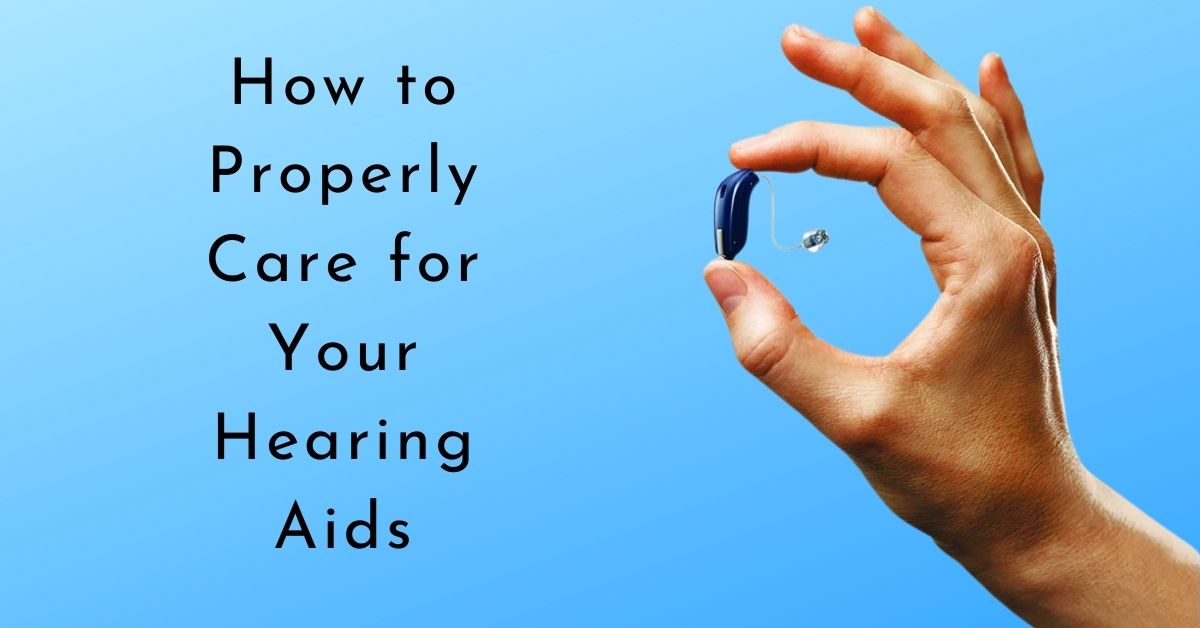Hearing aid users know how important it is to have your devices in proper working order. Hearing aids are an investment in your health, and knowing how to properly care for them is part of getting both the best performance and the longest life out of your devices. Routine care for hearing aids ensures that they are clean and dry and it can catch small issues before they develop into larger ones. Let’s take a look at what basic care for your hearing aids looks like.
Avoid Moisture
Key to ensuring your hearing aids perform well is keeping them away from moisture. Always remove your hearing aids before swimming, bathing and showering. In hot climates or after exercise, use a clean, dry cloth to remove any sweat from your hearing device.
Hearing aids are equipped with moisture resistant coatings to meet the demanding environment of the human ear canal. These coatings, however, don’t mean that your hearing aid is waterproof. Your hearing aids should never be submerged in water and kept away from splashing water and steam. Remember to carry a waterproof storage case for your hearing aids with you to protect them when you remove them.
Nightly dehumidifying is one of the best ways to keep your hearing aids dry. Small hearing aid dryers work efficiently to completely dry your hearing aids when you remove them to sleep. Using a hearing aid dryer is especially recommended for those living in humid climates.
Avoid Temperature Extremes
Your hearing aids are built for performance at the same temperatures the human body is comfortable in. Exposing your devices to extreme heat or cold can cause irreparable damage to your hearing aids. Extreme heat, such as leaving hearing aids in a hot car during the summer, can cause elements to warp. Similarly, freezing temperatures can cause electronic issues. Never store your hearing aids where they can be exposed to such temperatures.
Daily Cleaning
It is important to develop good habits around cleaning your hearing devices. They’ll need your attention at least once a day. We usually recommend cleaning your hearing aids right when you remove them to go to bed.
The first step is to wash and dry your hands thoroughly. Next, gather your cleaning materials on a smooth surface. You’ll need a clean and dry cloth and preferably a small hearing aid cleaning kit – which includes a wax pick or wire loop and a small brush. First, use your tools to remove any dirt, earwax or other buildup from the openings in the device. Next, wipe your hearing aid down thoroughly with your clean cloth. If your device uses replaceable batteries, open the battery compartment overnight. Set your hearing aids in a closed case – again, we prefer a drying chamber – so they will be protected and ready for you when you wake up.
You should never use alcohol or cleaning chemicals on your hearing aids. Chemicals can damage the materials and coatings on your hearing device and introduce moisture. When doing daily maintenance your cloth and tools should be dry.
Earmold Cleaning
For those who use behind-the-ear (BTE) style hearing aids, the detachable earmold may need extra cleaning. Cleaning your earmolds is weekly or bi-weekly maintenance for your hearing aids. When you inspect your hearing aids daily, take note of waxy buildup or discoloration on your earmolds. A strong smell from your ear molds can be an indication of an ear infection – in addition to cleaning your hearing aids we recommend consulting with your hearing specialist if an odor is present.
Soft detachable earmolds are the one part of your hearing aid that we recommend cleaning with soapy water, especially if your ears have regular waxy buildup. First, remove the soft earmold from the rest of the hearing aid – the receiver and any tube or wire connecting to the microphone should not be exposed to water.
Soak the earmolds in water with a gentle soap added. Do not use alcohol or cleaning chemicals to clean your earmolds. After a short soak in soapy water, rinse them in plain water and dry them with a clean cloth. Let your earmolds air dry overnight separately from the rest of your hearing aids and reattach them only after they are completely dry.
If you are in need of hearing aid maintenance and repair, look no further! We’re here to help. Contact us today!

